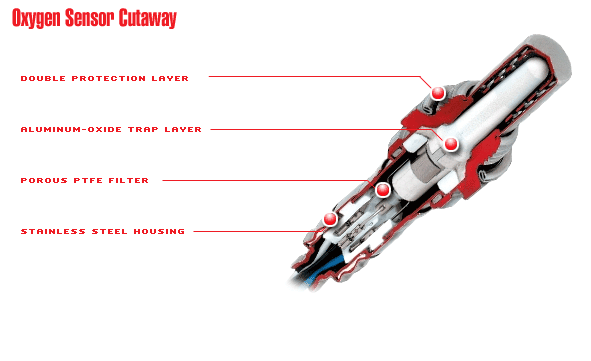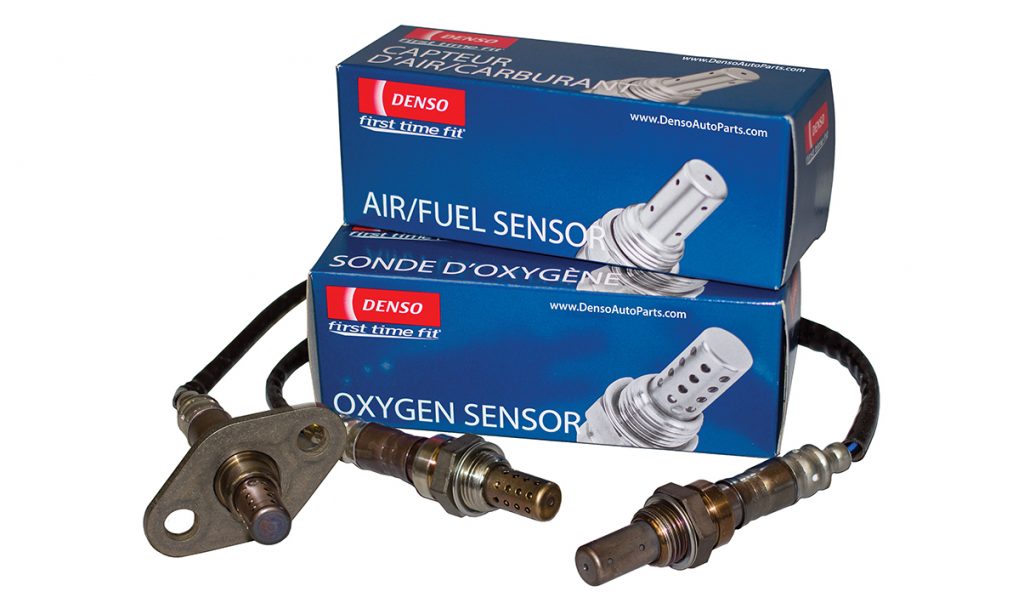In 1980, Corvettes sold in the State of California had a revolutionary, new, electronic engine control system called “Computer Command Control.” This system controlled part-throttle fuel mixture, spark advance, idle speed and the action of certain exhaust emissions controls. Obviously, since it controlled fuel delivery and spark timing, the system had profound impact on the car’s driveability. In 1981, Computer Command Control was on all Corvettes and in 1982 it was upgraded significantly and adapted to another revolutionary system: electronic fuel injection.
The advent of digital engine controls brought us new terms such as “idle air control” (IAC or “eye-ack” as engineers say) a device which enables the engine computer to control idle speed, “manifold absolute pressure (MAP) sensor” which senses pressure levels in the intake manifold, “throttle position sensor” (TPS) which tells the computer how far your pushing down on the gas pedal and, of course, “oxygen sensor” (O2S) which tells the engine computer the exhaust’s oxygen content.
The oxygen content of the exhaust is a key indicator of the engine’s air/fuel ratio. Minimum exhaust emissions come when the engine’s air/fuel ratio is at about 14.7:1 or “stoichiometric” (stoi-ke-oh-metric) as scientists say. A mixture is stoichiometric when the exact proportions of substances for a specific chemical reaction are present such that they can combine with no excess of any reactant. In theory, when this is applied to air and gasoline burning in an engine, they combine to form only nitrogen, carbon dioxide and water. In reality, stoichoimetric combustion is not “perfect” but is virtually complete with only a small amount of oxygen left over. When the air/fuel ratio burns in a manner that is stiochiometric, the oxygen content will be low. If the mixture burns rich, the oxygen content will be even less. If it burns lean, it will be higher.
If we put a device in the exhaust flow which senses oxygen content and generates a voltage which varies with that content, we can give the engine computer “feedback” as to what how much oxygen is in the exhaust. The computer can, then, use this feedback to vary the engine’s air/fuel ratio in a manner that keeps that oxygen content relatively consistent.
In the early years of engine controls, oxygen sensors were somewhat misunderstood, had a somewhat limited life and were expensive to replace. Today, 25 years after the first computer engine controls were introduced, most of the gasoline power vehicles sold in developed countries use feedback control of air/fuel ratio and have oxygen sensors. With every car built since the mid-’80s having at least one O2S, most cars having two and some, including all Corvettes built after 1995, having four, oxygen sensor are an automotive commodity just like tires. Their durability is typically about 50,000 miles but can vary from 30,000 to 75,000 miles.

Your Corvette came with oxygen sensors made by either Delphi or Bosch, however, there are other sources for them and one is Denso, a Japanese company which has, of-late, come to the attention of performance-oriented Corvette owners mainly for its iridium-tipped spark plugs.
I discovered Denso oxygen sensors because I have was having constant trouble with the Bosch sensors GM installed and sells for my 1995 Corvette ZR-1. In 61,000 miles I’ve replaced four of these sensors. The problem with them has not been total failure but, rather, a gradual lessing of their response to changes in oxygen content such that the engine’s response and driveability suffers. I don’t use leaded fuel and do not use pour-in octane boosters. In early 2003, after replacing the fourth ACDelco sensor on that car, I began looking at alternatives.
Because they “live” in the exhaust flow, oxygen sensors are constantly exposed to a barrage of harmful contaminants which can, if the sensor is exposed to an inordinate amount of those harmful substances, degrade its ability to produce an accurate reading. Engine oil, additives in oil, sealants, silicone, and gasoline additives all can damage a sensor’s ceramic element which is the part of O2S which does the actual sensing.
Before installing what Denso calls its “First Time Fit” Oxygen Sensors, I researched the products’ features. Denso oxygen sensors have an exclusive, aluminum oxide “trap layer” on the outside their ceramic elements which increases the sensors’ resistance to degradation by either RTV silicone sealants, tetraethyl lead contamination in gasoline and certain other contaminants.
In head-to-head testing against leading competitors, according to Denso Sales, California, the distributor of Denso products in the U.S., Denso sensors were rated two times more resistant to silicone and lead poisoning. In a practical sense, anecdotal accounts I hear from drag racers, especially the Buick Grand National community, running supercharged engines on leaded racing gasoline are that the Denso Oxygen Sensor is by-far-and-away more durable on leaded gas than any other sensor on the market. Now, it is true that running leaded gasoline significantly decreases the life of any oxygen sensor, but the Densos seem to have the longest of the lead-driven, decreased life.
In addition to the aluminum oxide trap layer, Densos have a perforated, protective cover which Delphi and Bosch do not have and which better maintains optimum sensor temperature and further protects the ceramic element from contaminants or physical damage.
A lesser-known point of information about oxygen sensors is they must have a source of “reference” air in order to work properly. Typically, that air comes from the atmosphere in the immediate vicinity of the sensor location, flows down the sensor harness’ outer sheath and into the sensor’s upper section. Denso sensors have a porous Teflon air filter to stop water or other engine-related contaminants from entering the sensor with the reference air. Lastly, Denso oxygen sensors have a corrosion-resistant, all-stainless-steel housing.
As a preliminary step (because replacing sensors on LT5s is a difficult job and I was looking for something easy to try, first), I put a pair of Denso O2 sensors (PN 234-4018) in the front positions (the engine has four, two ahead of the catalytic convertor and two behind them) in the exhaust system of my 2001 Chevy Camaro. In an OBD2 engine, the front sensors control give feedback to the computer on air/fuel ratio and the rear two monitor the performance of the cats. In the year that followed, I ran the car for nearly 20,000 miles and those Denso sensors have performed as well as any OE part.
Late in 2003, I replaced both Bosch sensors (PN 234-3094) in the ZR-1 with Densos and, while the distance I’ve driven since is not nearly as much as I’ve put on the sensors in the Camaro, so far, the Densos in my LT5’s exhaust are working well. The acid test will be how they are working in another six-to-nine months, as it seemed the stock ACDelcos would last a year.
Installation: In the case of both my Camaro and my ZR-1, the Denso “First Time Fit” promise was fulfilled. The sensors had the proper, O.E. type connectors, their wires were the correct length and colors and each Denso O2S came with a little packet of that special kind of anti-seize lubricant needed for the threads of oxygen sensors. The installation “experience” you get with Denso O2Ses is quite positive. An added benefit of Denso O2Ses is in some cases they are less expensive then either a Delphi or Bosch sensor purchased from GM so….you’re getting a better sensor for less money.
Comments: For more information on Denso Oxygen Sensors visit Denso’s web site at: www.densoaftermarket.com, call 1-888-96D ENSO or write Denso Sales of California, Inc., 3900 Via Oro Av., Long Beach CA 90810

